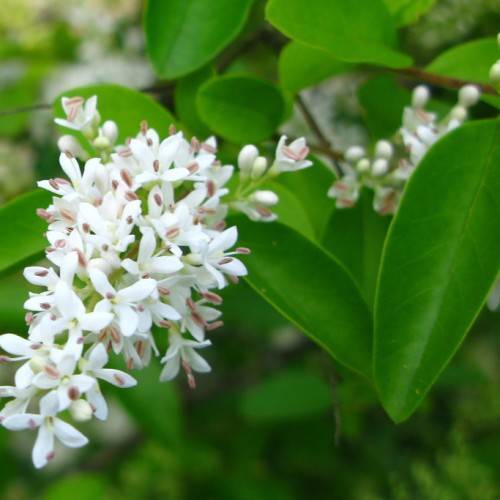
Amur privet
Ligustrum amurense
Cycle:
Perennial
Watering:
Minimum
Hardiness Zone:
3 - 7
Flowers:
Flowers
Sun:
Full sun,part shade
Fruits:
Fruits Ready In Fall
Leaf:
Yes
Growth Rate:
High
Maintenance:
Moderate
Drought Tolerant:
Yes
Invasive:
Yes
Care Level:
Medium
watering
Amur privet (Ligustrum amurense) requires moderate water to remain healthy. Water the plant deeply once a week, allowing the soil to become slightly dry between watering. During periods of drought or extremely hot temperatures, you may need to water your Amur privet more frequently. During the hottest times of the year, water your Amur privet twice a week or daily if it is planted in a pot. To ensure the plant receives enough water in the summertime, apply about 1 inch of water weekly.
sunlight
Amur privet (Ligustrum amurense) is a deciduous, multi-stemmed shrub that thrives in full sun to part shade. Its optimal growth is in areas where it receives 6 to 8 hours of direct sunlight daily, with the best growth and most lush foliage being seen in those areas that receive the most sunlight. However, it can still grow well in shady areas where the amount of light is significantly less than 6 to 8 hours a day. In addition, Amur privet can also tolerate high heat and humidity. In cooler climates, it may lose its leaves in winter and become dormant; however, with proper pruning and mulching, it is also able to survive the cold temperatures.
pruning
Amur privet should be pruned in late winter or early spring for best results, before the plant has a chance to put out any new growth for the season. Start by cutting off any branches back to a healthy set of shoots to reduce the size. Make sure not to prune more than 1-third of the plant's foliage in a single season. Focus on dead or sickly looking branches and removing branches that are crossing or rubbing together. Also selective removal of shoots below the canopy to open the crown and allow light and air to circulate inside it. If you are not sure how much to prune, it is always better to err on the lower side. After pruning, apply a balanced fertilizer to promote vigorous new growth.
